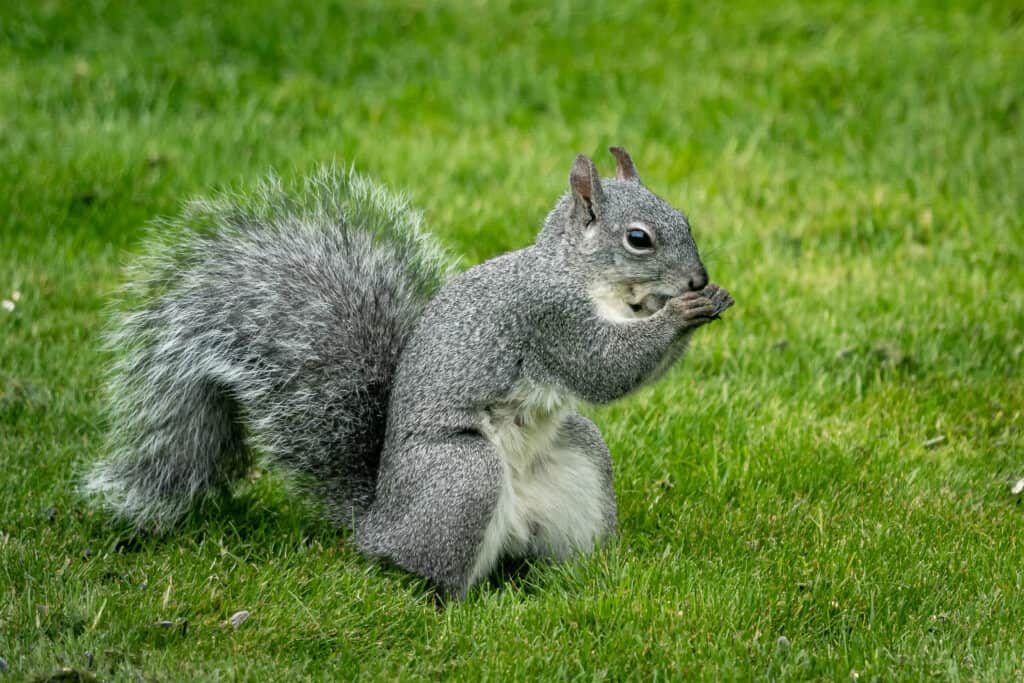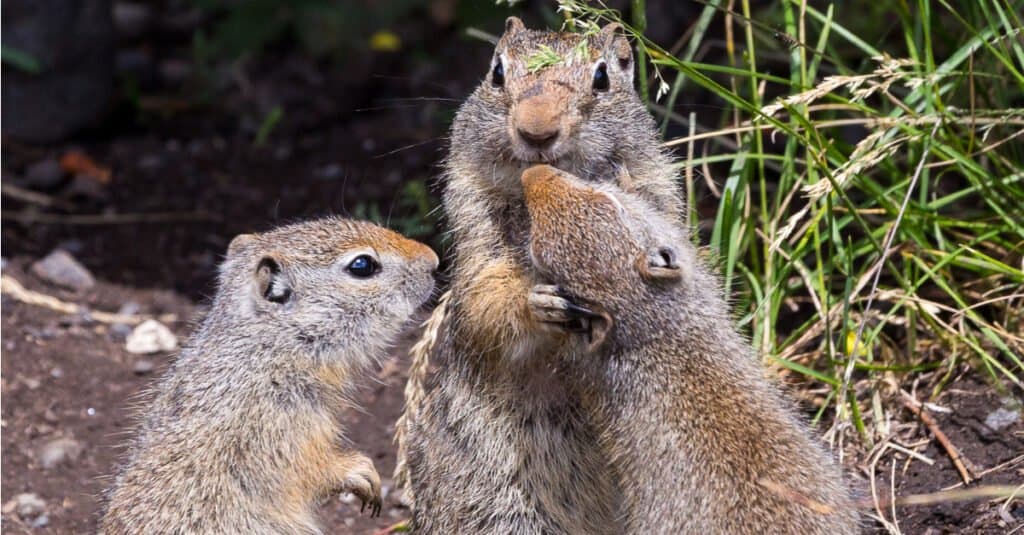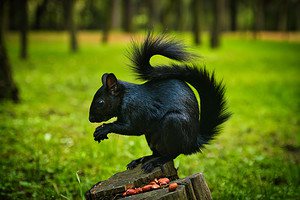Most of us will come into contact with at least one squirrel, and some of us will come into contact with many more. Resembling a mouse with a cute, puffy tail, the squirrel is a common critter all across the globe. We enjoy watching them, but we also strive to get rid of them occasionally. However, how numerous are squirrels worldwide? Are you curious? In this article, we will explore the answer to this question!
How Many Squirrels Are Left in the World?

There are over 200 squirrel species worldwide.
©d murk photographs/Shutterstock.com
You wouldn’t be the first person to ponder this question of squirrel population size. There are between 200 and 300 million squirrels in the world, which will depend on which species you count.
The global squirrel population is difficult to estimate, but there are some solid ways for doing so. Looking at the known local populations is the best estimate of the global squirrel population. This includes counting the squirrels in a certain region and extrapolating their numbers to a bigger area.
The results of surveys and studies can also be used to make educated guesses about the worldwide squirrel population. The amount of food available for squirrels in various places can also be used as a proxy for the worldwide squirrel population.
Squirrel populations can vary substantially from one region to another, despite their global distribution. Squirrels can be found almost wherever in North America, from the city to the suburbs to the woods.
The red squirrel is the most prevalent in Europe, whereas several species can be found across Asia, such as the Indian gigantic squirrel, Pallas’s squirrel, and the Himalayan red-bellied squirrel. The African giant squirrel dominates the continent. The short-beaked echidna is widely seen across Australia.
Is The Squirrel Population Endangered?
Squirrel numbers have gone up and down at various points in time. The population of some regions can drop by as much as 90%, while others may see an increase. Studies on this topic are scarce, at least outside of a select few states and nations.
For example, after reevaluating the western gray squirrel’s classification, the Washington Department of Fish and Wildlife (WDFW) has decided that it should be upgraded from “threatened” to “endangered” in the state. There are three species of native tree squirrels in Washington, and the status evaluation shows that the western gray squirrel has been in decline since the late 19th century.
Despite widespread availability, their populations are going down in some regions as their natural habitats are destroyed. Despite their abundance, squirrel numbers are falling all over, and if continued, they may not survive the next century.
How Are Squirrels Beneficial to Our Ecosystem?

Squirrels alter the vegetation in the forest mostly by eating and distributing nuts and seeds.
©Michael Chatt/Shutterstock.com
The primary effect squirrels have on the forest is changing the types of plants that grow there. Seeds, which provide the majority of squirrels’ food, are buried. They hide them all over the land, and then when they need to find them, they often can’t remember where they buried them. In doing so, they are actually laying the groundwork for future growth!
Recognizing the value of these animals to the global ecology and taking steps to protect them is crucial. Squirrel populations may be kept healthy all over the world if their habitats are safeguarded, poaching is reduced, and they are provided with enough food and water.
Were There Any Prehistoric Squirrels That Are Now Extinct?
New information about the history and development of flying squirrels has been uncovered thanks to the discovery of the oldest flying squirrel fossil. The Miopetaurista neogrivensis fossil, discovered by a team of paleontologists from the Abocador de Can Mata site in Barcelona, Catalonia, Spain, is the earliest flying squirrel fossil ever discovered (11.63 million years old).
The flying squirrel is the most successful group of gliding mammals, with 52 species spread across the northern hemisphere. However, where these creatures came from is a contentious topic. While genetic research points to a separation from tree squirrels around 23 million years ago, possible flying squirrel fossils date back 36 million years.
What Would Happen If Squirrels Went Extinct?
The loss of squirrels might have far-reaching effects on the environment, including a decrease in biodiversity and the cessation of vital ecological services. The spread of seeds by animals like squirrels is crucial to the success of plants. The soil can benefit from their burrowing tendencies because of the increased airflow they create.
Also, foxes eat squirrels. Therefore, the fox population would decrease if the squirrel population disappeared. Maintaining ecological harmony requires the vigilant defense and preservation of all animal species, including squirrels.
Thank you for reading! Have some feedback for us? Contact the AZ Animals editorial team.








